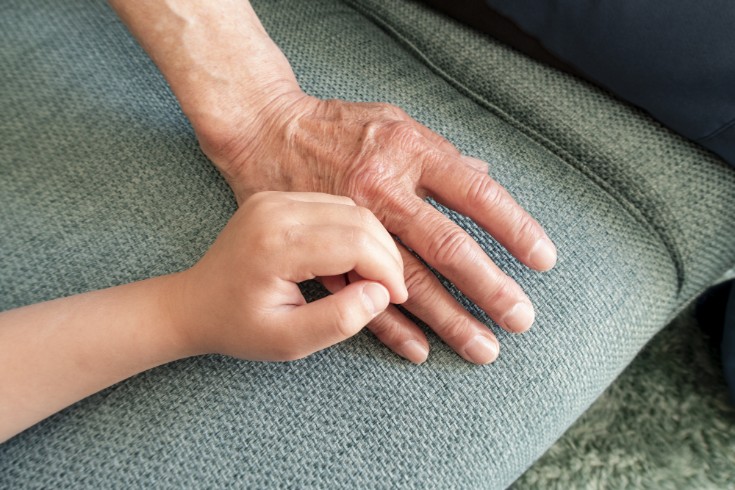Protection of Women and Minors in Japanese Labor Law and Employment Support in an Aging Society with Fewer Children

Understanding the unique personalityistics of the labor law system in Japan is not merely a matter of compliance; it is a critical management issue that underpins sustainable growth and the core of human resource strategies for businesses operating in the country. Particularly, Japan’s severe demographic challenges of an aging population and low birthrate significantly impact the nature of labor laws. Faced with the structural issue of a shrinking workforce, the Japanese legal system aims to protect the future labor force and create an environment where diverse talents can continue to maximize their abilities. Grasping Japanese labor law from this perspective is essential for effective personnel and labor management and risk management. In this article, we will provide expert commentary on three important themes positioned within this broader context, namely “Labor Contracts with Minors,” “Protection of Female Workers,” and “Employment Support under the Childcare and Family Care Leave Law,” based on specific legal provisions and case law. These three themes may seem unrelated at first glance. However, they are a collective set of interlinked legal policies aimed at the overall goal of securing and maximizing the labor force population in Japanese society. Regulations protecting minors lay the foundation for nurturing a healthy future workforce, while provisions related to the protection of women’s maternity support women to remain in the labor market without interrupting their careers due to childbirth or childcare. The Childcare and Family Care Leave Law functions as a safety net, allowing workers in childcare or family care periods to continue working without having to resign. A deep understanding of these systems will provide extremely valuable insights for formulating strategies for talent acquisition, retention, and development in Japan.
Special Provisions for Labor Contracts with Minors in Japan
When employing minors, Japanese law requires special consideration to protect their healthy development, distinct from the regulations for adult workers. The Japanese legal system forms a unique framework through the interaction of the Japanese Civil Code and the Japanese Labor Standards Act. This framework not only protects minors from exploitation by employers but also, in some cases, from exploitation by their legal guardians, imposing specific obligations on employers.
Firstly, regarding the principle of who can enter into a contract, Article 5 of the Japanese Civil Code stipulates that minors must obtain the consent of their legal representative (usually a parent) to engage in legal acts such as contracts. This principle of the Civil Code also applies to labor contracts, requiring employers to obtain consent from the minor’s parent or guardian. However, the Japanese Labor Standards Act introduces a significant modification to this principle. Article 58, Paragraph 1 of the Japanese Labor Standards Act explicitly prohibits parents or guardians from entering into labor contracts on behalf of minors. This provision is designed to prevent parents from forcing minors to work under unfavorable conditions or against their will. Therefore, labor contracts must always be concluded directly with the minor themselves.
Similarly, there are protective provisions regarding the payment of wages. Article 59 of the Japanese Labor Standards Act grants minors the right to claim wages independently and prohibits parents or guardians from receiving wages on behalf of minors. This is to prevent situations where parents manage and consume their child’s wages without using them for the child’s benefit. Thus, employers must pay wages directly to the minor, even if requested by the parent or guardian.
These provisions require employers to exercise double caution in the procedures related to employing minors. In other words, while employers need to obtain the ‘consent’ of the guardian for contract conclusion, both the act of contracting and the receipt of wages must be carried out directly with the minor ‘themselves.’ This separated structure can be interpreted as legally obligating employers to act as the ultimate protectors of minors’ labor rights.
Furthermore, the Japanese Labor Standards Act sets more specific protective provisions for young workers (those under 18 years old). Firstly, the minimum age for employment is set at the end of March 31st following the day the child reaches 15 years old, essentially until the completion of compulsory education (Article 56 of the Japanese Labor Standards Act). Employers are required to keep official documents, such as a certificate of residence, at the workplace to verify the age of young workers (Article 57 of the Japanese Labor Standards Act).
Regarding working hours, young workers are generally not allowed to work overtime or on holidays, and cannot be made to work beyond the statutory working hours of 40 hours per week and 8 hours per day. Night work (from 10 p.m. to 5 a.m.) is also generally prohibited (Article 61 of the Japanese Labor Standards Act). Additionally, employment in hazardous or harmful tasks, such as handling heavy objects or operating certain dangerous machinery, which could negatively affect their physical and mental development, is restricted (Article 62 of the Japanese Labor Standards Act). In the event that a person under 18 is dismissed and wishes to return home within 14 days of the dismissal, the employer is also obligated to cover the necessary travel expenses (Article 64 of the Japanese Labor Standards Act).
These stringent provisions ensure that minors have the opportunity to receive education and grow healthily while safely gaining work experience. For companies, it is essential to establish a special management system to comply with these regulations, such as thorough age verification, setting labor time management systems for young workers, and reviewing the salary payment process.
Protections for Women Under the Japanese Labor Standards Act
The provisions for the protection of female workers under the Japanese Labor Standards Act have significantly evolved over time. Historically, there were “women’s protection provisions” that included restrictions on overtime work for all women and prohibitions on night work. However, many of these were abolished in the 1999 legal revision to promote equal opportunities and treatment for both men and women. Currently, the remaining protections for women in the Japanese Labor Standards Act primarily focus on “maternity protection provisions,” which are centered around pregnancy, childbirth, and childcare. These provisions aim to ensure that female workers can continue to work with confidence while maintaining their maternal health.
The most central system is the prenatal and postnatal leave stipulated in Article 65 of the Japanese Labor Standards Act. Prenatal leave can be taken from six weeks before the expected date of delivery (or 14 weeks in the case of multiple pregnancies) if requested by the female worker. On the other hand, postnatal leave is mandatory from the day after childbirth for eight weeks, during which it is generally prohibited to employ the female worker. However, after six weeks postpartum, if the worker requests and a physician deems it acceptable, she may be allowed to work.
It is crucial to understand that while prenatal leave is “request-based,” postnatal leave is “mandatory” in principle. This means that a pregnant worker who does not request prenatal leave is not immediately acting illegally by continuing to work within the statutory working hours. However, if the worker makes a request, the employer cannot refuse it. At the moment of this “request,” the employer’s obligation becomes absolute. Therefore, it is extremely important for management to understand the legal significance of these requests and to establish a system that can respond promptly and appropriately to manage compliance risks.
To protect the health of pregnant female workers, the Japanese Labor Standards Act also prescribes additional measures. Article 65, Paragraph 3 of the Japanese Labor Standards Act obligates employers to transfer pregnant women to lighter duties upon request. Furthermore, based on Article 66 of the Japanese Labor Standards Act, employers must not require pregnant women and women within one year postpartum (hereinafter referred to as “pregnant and postpartum women”) to perform overtime work, work on holidays, or night work if requested. These provisions also structure the employer’s obligations to arise from the worker’s “request.”
Protection from hazardous and harmful work is another important pillar. Article 64-3 of the Japanese Labor Standards Act prohibits employing pregnant and postpartum women in work that is harmful to pregnancy, childbirth, and nursing. This includes handling heavy objects and working in places where harmful chemicals are emitted. Additionally, employment in certain jobs that are harmful to the functions related to pregnancy and childbirth is also restricted for women other than pregnant and postpartum women.
There are also provisions to support childcare after childbirth. Article 67 of the Japanese Labor Standards Act grants women raising a child under one year of age the right to take two childcare breaks per day, each at least 30 minutes long, in addition to regular break times.
In addition to these provisions under the Japanese Labor Standards Act, the “Act on Securing, Etc. of Equal Opportunity and Treatment between Men and Women in Employment” (Equal Employment Opportunity Law) also establishes important measures for maternal health management. Article 12 of this law obligates employers to ensure that female workers have the necessary time to undergo health examinations for pregnant and postpartum women. Moreover, Article 13 mandates that employers must take necessary measures such as changing working hours or reducing workloads to comply with the guidance received from physicians based on health examinations. Dismissal or other disadvantageous treatment based on requests for these measures is strictly prohibited under Article 9 of the same law.
Childcare and Nursing Care Leave Act: A System Supporting the Continuation of Employment for a Diverse Workforce
In the face of Japan’s declining labor force population, preventing resignations due to childcare or family nursing care and ensuring the continued employment of experienced personnel is an urgent issue for both companies and society. The “Act on Welfare Measures for Workers Taking Care of Children or Other Family Members, Including Childcare or Family Care Leave” (hereinafter referred to as the Childcare and Nursing Care Leave Act) provides a comprehensive legal framework to address this challenge. This law establishes various systems to support workers in continuing their careers with peace of mind while balancing work and family life.
One of the core systems is “childcare leave.” This is a leave system available to any worker, regardless of gender, who is raising a child under the age of one (Article 5 of the Japanese Childcare and Nursing Care Leave Act). Fixed-term employees are also eligible if they meet certain requirements. The leave period is generally until the child reaches one year of age, but can be extended to 18 months and further to two years under specific circumstances, such as the unavailability of a childcare facility. To promote cooperative parenting, special systems such as “Papa Mama Childcare Leave Plus” (allowing both parents to take leave until the child reaches 14 months) and “Postnatal Papa Childcare Leave” (up to four weeks of leave within eight weeks after the child’s birth) have also been established.
Another pillar is “nursing care leave.” This leave can be taken when a spouse, parent, child, or a spouse’s parent, as defined by law, is in a state of needing constant care for more than two weeks due to injury, illness, or physical or mental disability. Workers can take up to a total of 93 days of nursing care leave for each eligible family member, which can be divided into three separate periods. This system is designed to intensively address the initial stages of establishing a care structure, such as arranging for nursing care services and developing a care plan.
The Childcare and Nursing Care Leave Act not only mandates long-term leave systems but also obliges employers to implement various measures to support the daily balance of work and family life. For example, employers must establish a system to reduce the standard working hours for workers raising children under three years of age. There are also restrictions on allowing workers raising pre-school children or caring for family members in need of nursing care to work overtime beyond certain limits (24 hours per month, 150 hours per year) and an obligation to exempt them from night work (from 10 p.m. to 5 a.m.).
Additionally, to address short-term needs, there are leave systems such as “child nursing leave” and “nursing care leave.” Child nursing leave can be taken for caring for a pre-school child who is sick or injured, or for accompanying them to vaccinations and health check-ups. Nursing care leave can be used for accompanying a family member in need of care to medical appointments or for arranging nursing care services. Both types of leave allow for up to five days per year for one eligible child or family member, and up to ten days for two or more, with the flexibility to take leave in full-day, half-day, or hourly increments.
While these systems may have similar names and can be easily confused, their purposes, targets, durations, and units of leave are clearly different. Understanding these differences accurately and guiding workers appropriately is extremely important in human resource and labor management. Below is a comparison of the main four systems.
Comparison of Major Childcare and Nursing Care Leave Systems in Japan
| System | Purpose | Eligible Workers | Duration/Days | Unit of Leave |
| Childcare Leave | Long-term care for children under one year old | Male and female workers caring for children under one year old | Until the child reaches one year old (extendable up to two years) | Period |
| Nursing Care Leave | Establishing a care system for family members in need of nursing care | Male and female workers caring for family members in need of nursing care | Up to a total of 93 days per family member in need (divisible into three parts) | Period |
| Child Nursing Leave | Care for pre-elementary school children who are ill or injured | Male and female workers caring for pre-elementary school children | 5 days per year for one child, 10 days per year for two or more children | Full day, half day, hourly |
| Caregiver’s Leave | Accompanying family members in need of nursing care to medical appointments, etc. | Male and female workers caring for family members in need of nursing care | 5 days per year for one family member, 10 days per year for two or more family members | Full day, half day, hourly |
Prohibition of Disadvantageous Treatment and Japanese Case Law
To ensure the effectiveness of various systems established by the Childcare and Family Care Leave Law and the Act on Securing, Equal Opportunity and Treatment between Men and Women in Employment, Japanese law strictly prohibits employers from dismissing, demoting, reducing the salary of, or otherwise treating workers disadvantageously for using these systems. Specifically, Article 10 of the Japanese Childcare and Family Care Leave Law and Article 9 of the Japanese Act on Securing Equal Opportunity and Treatment between Men and Women in Employment serve as the legal basis for this prohibition. Disadvantageous treatment includes dismissal, refusal to renew contracts, demotion, disadvantageous transfers, pay cuts, and unfavorable evaluations in bonuses and promotions.
However, the boundary of what legally constitutes “disadvantageous treatment” is not always clear. In particular, how to reflect the non-working period during leave in wages and personnel evaluations is a practical issue many companies face. An important criterion for this was set by the “Kindai University Corporation Case” (Osaka District Court, April 24, 2019).
In this case, the legality of the university’s decision not to grant any regular pay raises for the fiscal year in which the plaintiff, a university lecturer, took childcare leave was contested. The university argued that the period of childcare leave was a time when no job experience could be accumulated and no improvement in job performance was made, thus justifying the exclusion from pay raises as a rational measure.
The court first recognized that the university’s regular pay raise system had a strong “seniority-based” personality, implemented uniformly according to years of service rather than individual performance evaluations. It then ruled that depriving an employee of the opportunity for a pay raise for the entire year, including the period of work not taken as leave, due to taking childcare leave, imposed a disadvantage beyond the direct effect of not providing labor during the leave period (not being paid). The court concluded that such treatment had the effect of deterring workers from taking childcare leave and was contrary to the purpose of the law, thus constituting “disadvantageous treatment” prohibited by Article 10 of the Japanese Childcare and Family Care Leave Law and was illegal.
An important point demonstrated by this ruling is that Japanese courts, when determining “disadvantageous treatment,” consider not only the direct impact of a pay cut during the leave period but also the long-term effects that the measure has on the worker’s future wage system and career path. Especially in seniority-based pay raise and bonus systems, mechanically applying unfavorable evaluations for legally mandated leave carries a high legal risk. For example, seemingly neutral internal regulations such as “those with a certain number of absences are not eligible for pay raises or bonuses” may be deemed illegal if they effectively function as a penalty for those who take childcare leave.
The lesson for companies from this case law is the need to thoroughly review internal regulations related to personnel evaluations, pay raises, and bonus calculations to ensure that taking statutory leave does not lead to unfair disadvantages. Beyond simply stating “no pay during the leave period,” systemic measures are required to ensure that wage levels and promotion opportunities upon return to work do not suffer permanent disadvantages compared to colleagues who did not take leave. Specifically, methods such as excluding the leave period from the evaluation period for pay raises and promotions or appropriately reflecting the work performance during the non-leave period in evaluations can be considered. Constructing such “leave-neutral” personnel systems is key to ensuring compliance and avoiding litigation risks.
Implementation of the 2025 Revised Law: Adapting to a Changing Society
In response to societal changes and the needs of workers, Japan’s Childcare and Family Care Leave Law has undergone several revisions. The latest amendments, which will be phased in from April 1, 2025 (Reiwa 7), include significant content that further advances support for balancing work and family life. At the heart of this revision is a policy shift that not only grants rights to workers but also encourages employers to actively support their employees’ work-life balance and propose flexible working arrangements. Companies must promptly revise their work regulations and establish internal systems to comply with these new obligations.
Firstly, measures related to childcare support will be significantly expanded. “Child Nursing Leave” will be renamed to “Child Nursing and Other Leave,” and the eligible age range for children will be extended from “pre-elementary school” to “completion of the third grade of elementary school.” In addition, reasons for taking leave will now include not only nursing for illnesses or injuries but also school closures due to infectious diseases and participation in school events such as entrance and graduation ceremonies. Furthermore, workers who have been employed for less than six months, who could previously be excluded from leave by a labor-management agreement, will no longer be excluded after the revision, allowing them to take leave immediately upon joining the company.
The right to request exemption from overtime work (excess of statutory working hours) will also be strengthened. While the current law targets workers raising children under three years old, the revision will expand this to include workers raising children “before elementary school age,” making it easier to choose a work style without overtime for a longer period during child-rearing.
Particularly noteworthy is the promotion of flexible working styles. Employers will now have a “duty of effort” to take measures to enable workers raising children under three years old or caring for family members in need of care to choose telework. Although this is a duty of effort and not legally enforceable, companies are expected to actively engage in supporting work-life balance. Moreover, for workers raising children aged three to pre-elementary school, employers will be required to introduce at least two out of five options: 1) changes to starting work times, 2) telework, 3) part-time work systems, 4) granting new leave (child-rearing support leave), and 5) establishment and operation of childcare facilities, allowing workers to choose and utilize one of these options.
Efforts to prevent caregiving-related resignations will also be significantly strengthened. Under the revised law, when a worker reports facing family caregiving responsibilities, the employer is obligated to individually inform the worker about caregiving leave and other work-life balance support systems and confirm their intention to use the systems. This measure aims to prevent resignations due to a lack of awareness of the systems. Additionally, providing information about work-life balance support systems related to caregiving will be mandatory for employees reaching a certain age, such as 40 years old, even before they face caregiving responsibilities.
These amendments demand new responses in corporate human resource and labor management. Whereas the previous legal framework was “passive,” with obligations for companies arising only upon application by workers, the new law requires an “active” role from companies to proactively provide information, confirm intentions, and propose flexible working arrangements. This signifies a shift in the focus of compliance from merely knowing the laws to how they are implemented in practice and how dialogue with employees is conducted. Companies must urgently build a concrete operational structure, including revising work regulations, training for managers, establishing standard processes for individual interviews, and preparing informational materials about work-life balance support systems.
Summary
In this article, we have explained three key legal frameworks centered around the protection provisions for women and minors set by Japanese labor law, as well as employment support systems in Japan’s aging society with a declining birthrate. The special rules for labor contracts with minors, considerations for female workers centered on maternal protection, and the comprehensive work-life balance support system provided by the Child Care and Family Care Leave Law are each independent provisions. Yet, they organically collaborate towards the common goal of addressing the significant challenge of Japan’s demographic structure and securing a sustainable workforce. Compliance with these legal systems is essential for avoiding legal risks and simultaneously for building a workplace environment where diverse talents can thrive, which is a crucial management strategy for enhancing corporate competitiveness. Particularly, recent legal amendments are shifting companies towards not only establishing systems but also actively providing information and engaging in dialogue tailored to each employee’s circumstances, demanding a transformation in the very approach to human resource and labor management.
At Monolith Law Office, we possess a wealth of experience in providing specialized legal services to a multitude of domestic and international client companies concerning the complex and continuously evolving regulatory landscape of Japanese labor law. Our firm is staffed with professionals who hold not only Japanese attorney qualifications but also foreign legal qualifications and are English speakers, enabling us to offer precise and practical advice on the unique challenges faced by companies expanding their businesses internationally. We provide comprehensive support tailored to your company’s needs, including the establishment of employment regulations, conducting in-house training, and addressing individual cases related to the themes discussed in this article.
Category: General Corporate





















